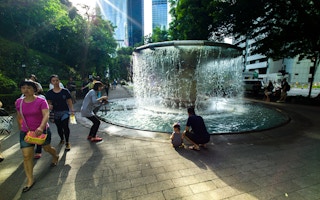Green cities have become a key goal of urban development. They are environmentally friendly, provide clean water, protect green space, and offer an enhanced public experience.
However, they’re not perfect. In fact, some of the different needs of citizens may have been neglected amid all the attention lavished on green cities. A green city in many real-life cases is neither green everywhere, nor green for everyone. Also, a green city does not guarantee an economically strong city, nor a livable place for people of all income classes.
While the reference to income classes may sound like an old debate about class war, inequality between citizens of different financial means should be acknowledged. A city that aims to provide for the diverse needs of its population has to formulate a correspondingly diverse urban development agenda.
Seen from the perspective of urban dwellers of different socioeconomic status, there are five urban development objectives that can be considered as ascending stages on a scale of livability.
First, in its most basic form, urban life needs to ensure a livelihood for citizens.
Second, it should enable accessibility, allowing its residents to participate fully in daily urban life.
Third, urban life should be affordable, ensuring that urban infrastructure, such as housing, and urban services, such as health care, are affordable for citizens.
Fourth, it requires resilience, enabling people to withstand social threats such as crime or environmental impacts like extreme weather events. Finally, at the highest stage, urban life has to provide for livability, which allows people to fully enjoy what their city has to offer.
Focus on citizen needs
One can argue that some city governments have focused a lot of attention and resources toward developing environmentally sustainable cities that offer residents spaces to enjoy and thrive in. Although this is laudable, and the five urban development objectives are not mutually exclusive, this policy focus might not deliver what many citizens most urgently need in developing Asia – shelter and a decent income.
This discrepancy is evident in the widespread housing insecurity and lack of economic opportunities we can see in many cities across the region. If a person’s main concern is to find a place to stay and to sustain a life for themselves and their families, a refurbished park in the city center won’t do.
I formulate this in a provocative, obviously simplified way, not to discredit a green urban development agenda but to underscore that local governments have many other objectives to consider besides developing environmentally friendly cities.
And even with regard to the green or other parts of the urban agenda, local governments have to pay special care to ensure that benefits are enjoyed by the whole urban population, or at least a large majority.
Local solutions for inclusive green cities
People of different socioeconomic status should be able to benefit from their cities in physical, economic, environmental, and social terms. The first three premises of a good urban life—basic livelihood, accessibility, and affordability—need to be delivered.
This doesn’t mean that resilience and livability—the other two of the five urban development objectives—are any less worthwhile as goals. But if you don’t have livelihood, can’t participate fully in the city and can’t afford to live there, the final two objectives are attainable only by a small urban elite.
Local governments have to carefully evaluate which thematic areas are most relevant to the daily needs of their citizens. If a city lacks access to clean water and sanitation, hospitals, or public safety, the urban development agenda should reflect this – even if it diverges from current urban planning trends.
Localized urban development policies should identify and reflect cross-sectoral benefits. For example, an economic growth program should aim to improve a city’s competitiveness and also provide job opportunities to a broader array of citizens so they can afford housing, medical bills, or the entrance fee to a cultural event.
Only then can green urban development have a genuine and positive impact on the lives of all citizens.
Renard Teipelke is an urban development specialist at the Asian Development Bank. This post is republished from the ADB blog.











